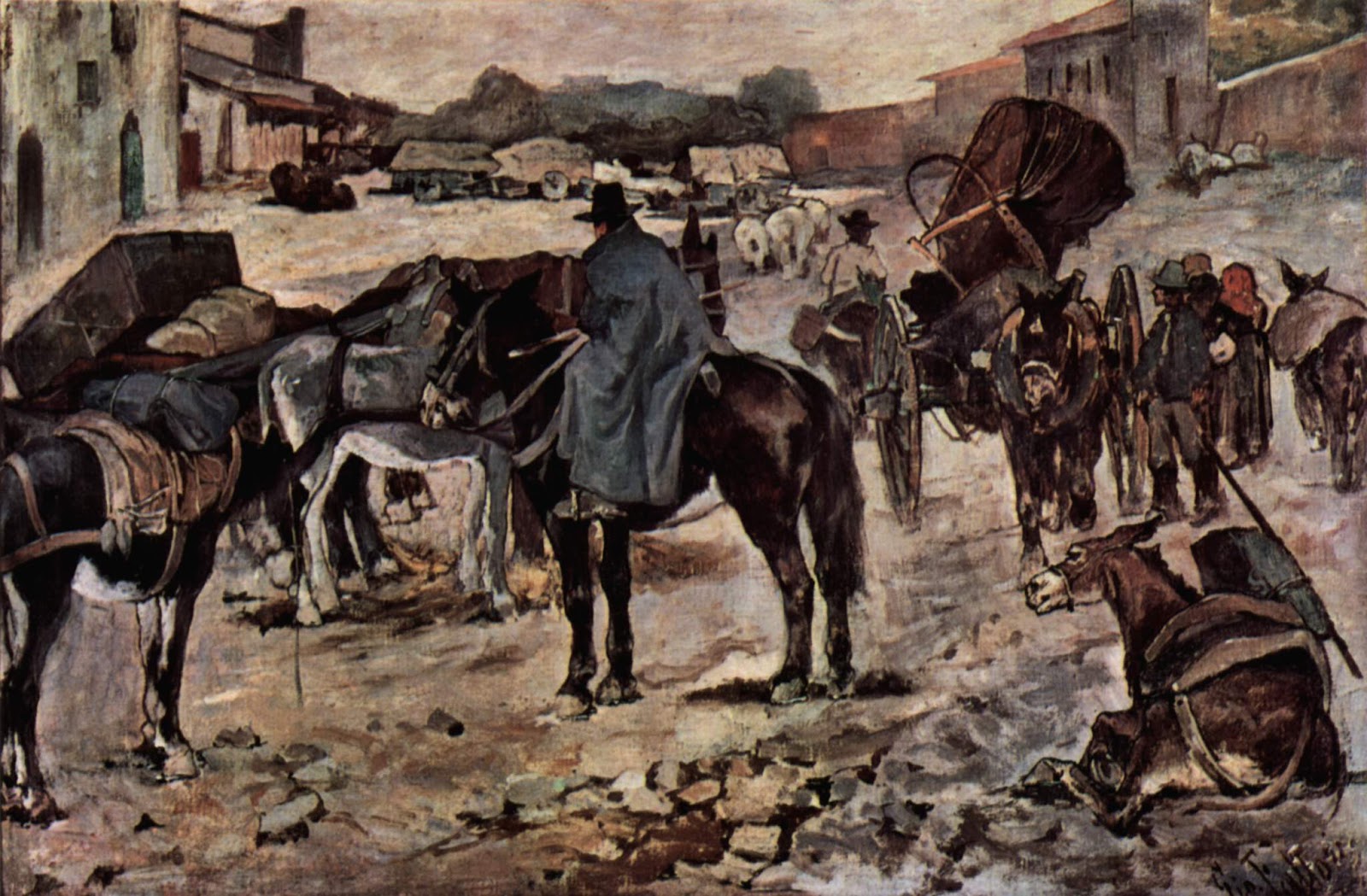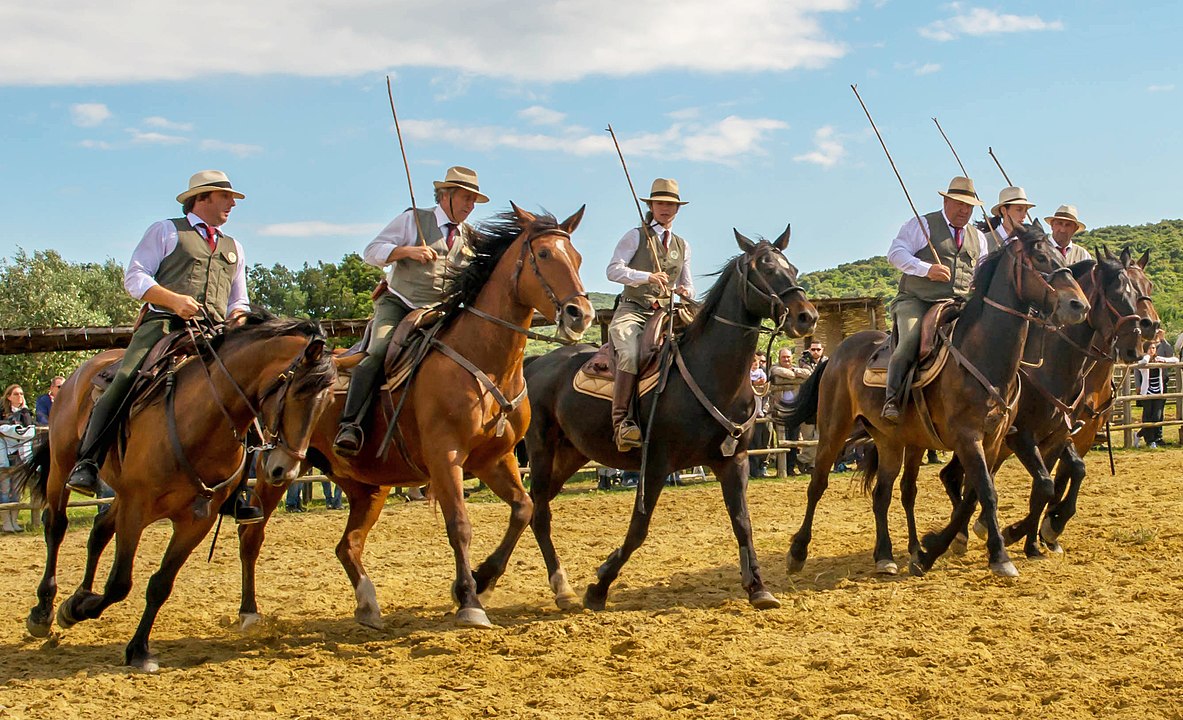Salvete Omnes,
 |
| Giovanni Fattori pinxit |
let us gallop for a moment to Tuscany, where in the Maremma (used to be marshes) region there have been the butteri or Italian 'cowboys' astride their Maremmano (a genetic and phenotypic study via researchgate page, a genetic study of the breed vs other European horse breed via academia page) horses (horse breeders page , Club page) - - all wiki commons galleries.
 |
| Giovanni Fattori painted this scene of foal breaking butteri-style |
valete














https://italianspecialoccasions.com/blog/tuscanys-wild-heartbeat-cowboy-traditions-in-maremma/ These local cowboys are called Butteri (buttero for singular), and they have been around for the last 250 years taming the wild horses of the area (Cavallo Maremmano) and taking care of wild longhorn cattle (the native Maremmana breed) and sheep.
ReplyDeleteThe buttero’s attire consists of coarse cotton pants, leggings, a velvet jacket and a hat. He carries the mazzarella, a stick employed for herding oxen and horses, and sits on the characteristic saddle called bardella. Some butteri use the scafarda, an old saddle still used by the Italian Army that is ideal for trekking and endurance in military style.
https://www.italymagazine.com/featured-story/riding-maremma-tuscan-cowboys
ReplyDeleteLike for Western riding, the Tuscan riding style developed according to the butteri's needs of working livestock from horseback. Like a cowboy, a Buttero rides his horse with one hand, holding a mazzarella, a long stick with a hook in the other hand employed for herding oxen and horses. He usually rides the typical horse of the Maremma, Cavallo Maremmano, and tends cattle (such as the native Maremmana breed) and sheep. The characteristic saddle is called a bardella.
The buttero's attire consists of grey cotton pants, a velvet jacket and a black hat. He protects himself from the rain with a large mantle called the "pastrano".
Also belonging to the tradition are the two types of saddle used in Monta Maremma: the scafarda, from the military built on wooden saddle, and the poorest bardella.
On the first Sunday in August the Butteri gather and brand the cattle, showing off their skills as horsemen.
https://www.wetheitalians.com/web-magazine/italian-handcrafts-grosseto-saddles
ReplyDeleteThe first “horned saddles” or “buttera saddles” date back to the second half of the 16th century, during the period of Spanish influence, with the establishment of the State of the Garrisons in Tuscany, in 1557, at the behest of Federico II, King of Spain.
The saddle had a very robust structure. It was constructed around a wooden frame made from fig (a very pliable wood) and reinforced with iron braces; the saddle was attached to the horse with a double anchoring system, with buckled supports and a leash.These saddles were used by “butteri” (cowherds), hence the name, in their arduous work with the cattle herds of the Grosseto Maremma.
The name buttero derives from the Latin “boum-ductor”, ox driver, or from the Greek “bùteros”, ox goader, and the buttero was in fact a herdsman. Butteros were very important figures in the local area, as they were able to manage herds of untamed livestock in the vast, inaccessible areas of the Grosseto Maremma, mounted on Maremmano horses. This saddle was used for “short work” when, after a buttero on foot had caught a cow using a “lasso”, it would be passed to a buttero on horseback, who would fix the rope to his saddle horn.
Production of this type of saddle still continues in the province of Grosseto, not only because the ancient profession of the Buttero still exists, but also because the saddle is used in equestrian tourism, which is highly developed in the area.